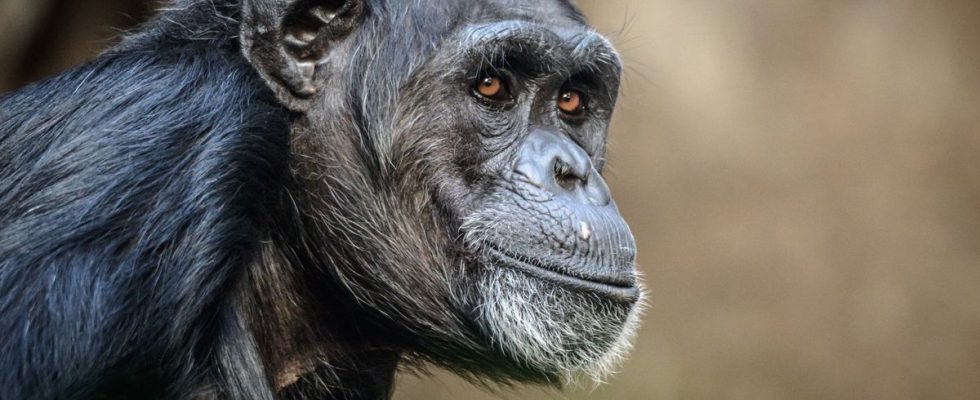Published on
Updated
Reading 2 min.
Human beings are capable of forming strategic alliances with other humans beyond their family circle or significant others. According to a study published Thursday in the journal Science, they are not the only ones.
Bonobos team up with strangers in a variety of ways, such as grooming, sharing food, and even forging alliances against sexual attackers.
Liran Samuni, the lead author of the study and a member of the German Primate Center in Goettingen, told AFP that studying primates is like opening “a window into our past”, providing clues about how humans began to collaborate on a larger scale.
Bonobos (Pan paniscus) are, along with chimpanzees (Pan troglodytes), the living beings closest to the human species. Bonobos and chimpanzees are also very close.
Relations between chimpanzees, which are hostile and likely to lead to deadly violence, are widely studied, unlike interactions between bonobos, an endangered species.
These primates are difficult to observe in their natural habitat because they live in remote areas of the Democratic Republic of Congo (DRC).
“Altruism”
Because of the findings on chimpanzees, some researchers inferred that hostility toward strangers was inherent in human nature, even hidden beneath the veneer of social norms.
Liran Samuni and Martin Surbeck, a Harvard professor and founder of the Kokolopori Bonobo Reserve in the DRC, studied the monkeys for two years.
“The first thing they do (…) is try to run away“, Martin Surbeck told AFP, explaining that it took time for the bonobos to forget the presence of humans and behave normally.
The researchers got up at 4 a.m. to walk through the forest with the help of their local guides to groups of bonobos and follow their activities throughout the day.
They focused on two small groups of 11 and 20 adults, noting with astonishment that they spent 20% of their time together, eating, resting, moving around.
“Every individual is different“, said Liran Samuni. “There are introverts, there are extroverts, there are those who are more sociable than others..
The researchers also observed that cooperation between the two groups was primarily driven by a few individuals who already tended to be the most cooperative within their own group.
These individuals entered into relationships with the sociable bonobos of the other group, creating a system of mutual benefit or “reciprocal altruism”.
Good in his body, good in his head!
Chimpanzee or bonobo?
Scientists also found that females, within their own group or allied with those of the other group, formed coalitions to chase an individual from a fruit tree or prevent the unwanted sexual advance of a male.
“We do not see in bonobos the sexual coercion common in chimpanzees“, continues Ms. Surbeck, explaining that this is perhaps partly due to mutual aid between females.
For the authors, this study offers an “alternative scenario” to those who would like cooperation to go against human nature, or that it arises from connections between extended families.
But “This does not mean that the reconstruction of the human past must be based solely on bonobos“, judge Joan Silk, scientist at Arizona State University.
Chimpanzees are closer to humans in other ways: for example, they use more tools and hunt animal prey.
Male chimpanzees form close bonds with other males and support their aggression while male bonobos form strong bonds with females.
Understand the selection process that led to these discrepancies”could help elucidate how and why humans became such surprising primates“, she concludes.
